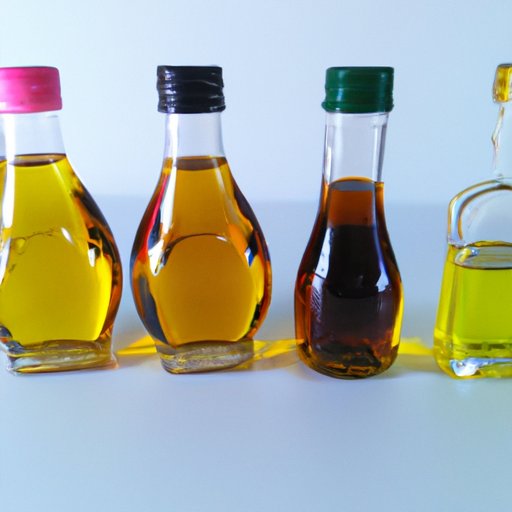Introduction
Cooking oil is an essential ingredient in many recipes, providing flavour, texture and nutrition. It’s used for frying, sautéing and baking among other methods of cooking. With so many different types of cooking oils on the market, selecting the right one can be confusing. This article will explore the origins of cooking oil, from plant to pan, to help you make informed decisions when selecting the best oil for your needs.

Exploring the Origins of Cooking Oil: From Plant to Pan
Cooking oil is made from a variety of sources, including plants, nuts and seeds. The type of oil produced depends on the source material, as each has its own unique nutritional profile, flavour and texture. The process of making cooking oil begins with pressing or grinding raw materials, such as olives, coconuts or sunflower seeds, to extract the oil. This oil is then filtered and refined to remove impurities and produce a product that is safe for consumption.

The Journey of Cooking Oil: From Farm to Fork
Once the cooking oil has been produced, it must be transported from the factory to the grocery store. Depending on the type of oil, this may involve bottling, packaging and labeling. Once the oil is packaged, it can be shipped to retailers and wholesalers who will then distribute it to restaurants, supermarkets and other food service establishments.

A Look at the Different Sources of Cooking Oil
Vegetable oil is a generic term for any oil derived from plant sources, such as corn, soybean, canola and safflower. These are often used in combination to create a balanced blend of flavour and nutrition. Olive oil is made from cold-pressed olives and is a popular choice for salads and light sautéing. Coconut oil is extracted from the meat of mature coconuts and is a good source of healthy fats. Sunflower oil is made from sunflower seeds and is a mild and light-tasting oil. Palm oil is derived from the fruit of the African oil palm tree and is commonly used in processed foods.
What is the Best Cooking Oil and Where Does it Come From?
When selecting the best cooking oil, there are several factors to consider. First, consider the smoke point of the oil. This is the temperature at which the oil starts to break down and produce smoke, which can affect the flavour of the food. Secondly, consider the flavour and aroma of the oil, as some oils can overpower the taste of the food. Lastly, consider the nutritional profile of the oil and how it fits into your overall diet. Each type of cooking oil has its own benefits and drawbacks, so it’s important to do your research before selecting one.
An Overview of How Cooking Oil is Made
The refining process of cooking oil involves several steps. First, the raw material is heated and pressed to extract the oil. This oil is then filtered and treated with chemicals to remove impurities. Finally, the oil is blended with other ingredients to achieve the desired flavour and consistency. The manufacturing process of cooking oil involves blending different oils together to create a consistent product. This blend is then packaged, labelled and shipped to retailers and wholesalers.
Conclusion
Cooking oil is an essential ingredient in many recipes and comes from a variety of sources, including plants, nuts and seeds. The production and transportation of cooking oil follows a complex journey from farm to fork. When selecting the best cooking oil, it’s important to consider the smoke point, flavour and nutritional profile. With careful consideration and research, you can select the best cooking oil for your needs.


